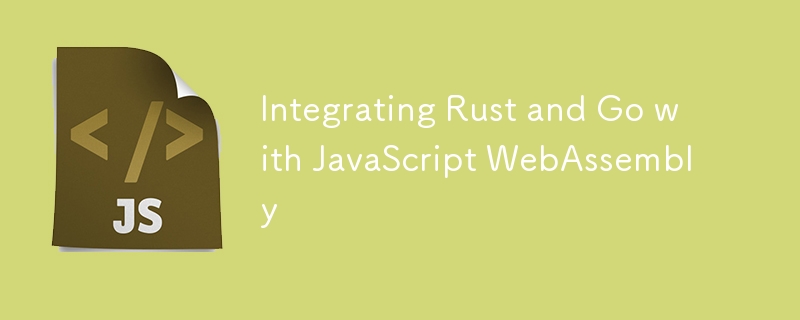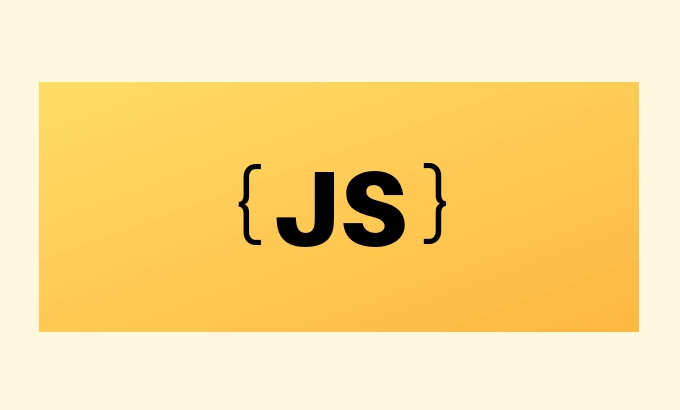To use Rust and Go with JavaScript via WebAssembly, first select the language and set the corresponding toolchain. For Rust, use wasm-bindgen annotation function to generate a JS wrapper through wasm-pack compilation; for Go, use built-in Wasm support to compile and load via WebAssembly.instantiateStreaming. Pay attention to memory management when calling, use dedicated logs and performance analysis tools to optimize critical paths during debugging, and reduce the number of calls to JS/Wasm boundary to improve performance.

When you're building modern web applications and performance is critical, combining Rust and Go with JavaScript via WebAssembly (Wasm) can be a solid move. Both languages offer solid Wasm support, letting you write high-performance logic and call it from JavaScript. The trick is knowing how to integrate them smoothly without getting stuck in tooling or runtime issues.

Setting Up Rust for WebAssembly
Rust has one of the most mature ecosystems for WebAssembly, thanks to tools like wasm-pack and wasm-bindgen . These make it easier to compile Rust code into Wasm and expose functions to JavaScript.
Here's how to get started:

- Write your Rust function and annotate it with
#[wasm_bindgen]so it's accessible from JS. - Use
wasm-pack buildto compile your crate into a Wasm module and generate a JavaScript wrapper. - Import the generated module in your JS code and call the functions like regular JS functions.
For example, a simple Rust function that adds two numbers can be compiled into Wasm and used like this in JavaScript:
import { add } from 'my-rust-wasm';
console.log(add(2, 3)); // outputs 5 Make sure your Cargo.toml is set up for a cdylib target and that you're using the right version of Rust and the wasm-bindgen dependencies.

Using Go with WebAssembly
Go's support for WebAssembly is still evolving, but it's already usable for many cases. Unlike Rust, Go compiles directly into Wasm without needing extra tools like wasm-bindgen .
Here's what you need to do:
- Write your Go code and use the
//go:wasmimportand//go:exportdirectives if you need to interface with JavaScript. - Compile with
GOOS=js GOARCH=wasm go build -o main.wasm. - Load the
.wasmfile in the browser using theWebAssembly.instantiateStreamingAPI and thegojsruntime.
One thing to note is that Go's Wasm binary size tends to be larger than Rust's, and the startup time can be slower. So for small, tight functions, Rust might still be a better fit.
Also, Go's garbage collector is not active in Wasm, so you need to manage memory carefully when passing data between Go and JS.
Calling Wasm from JavaScript
Once your Wasm module is built, calling it from JavaScript is fairly straightforward — but there are a few gotchas.
Here are some common patterns:
- Use dynamic imports for modules generated by
wasm-pack(like in Rust). - For Go, you need to load the Wasm module manually and initialize the Go runtime with
new Go()before instantiating the module. - When passing strings or arrays between JS and Wasm, use
TextEncoderandTextDecoderto handle memory correctly. - Be mindful of how memory is shared — especially with Go, where you may need to copy buffers to avoid crashes.
For example, in Go:
const go = new Go();
WebAssembly.instantiateStreaming(fetch('main.wasm'), go.importObject).then(result => {
const wasm = result.instance;
wasm.exports.yourFunction();
});In Rust, you can import like this:
import init, { your_function } from 'your-rust-module';
await init();
your_function();Debugging and Performance Tips
Debugging Wasm can be tricky since you can't just console.log from Rust or Go in the same way. Here are a few tips to make it smoother:
- In Rust, use
console_logfrom theconsole_logcrate to log to the browser console. - In Go, you can use
println()and it will show up in the browser console when running in the browser environment. - Use browser DevTools to inspect memory usage and function calls.
- Profile performance-critical sections using browser performance tools or
wasm-optfor optimizing the Wasm binary.
Also, keep an eye on how many times you're crossing the JS/Wasm boundary — each call has overhead. If you're processing a large array, do it all inside Wasm if possible.
And remember, not all functions benefit from being in Wasm. If the logic isn't CPU-intensive or doesn't run often, sticking with plain JavaScript might be simpler and faster.
Basically that's it.
The above is the detailed content of Integrating Rust and Go with JavaScript WebAssembly. For more information, please follow other related articles on the PHP Chinese website!

Hot AI Tools

Undress AI Tool
Undress images for free

Undresser.AI Undress
AI-powered app for creating realistic nude photos

AI Clothes Remover
Online AI tool for removing clothes from photos.

Clothoff.io
AI clothes remover

Video Face Swap
Swap faces in any video effortlessly with our completely free AI face swap tool!

Hot Article

Hot Tools

Notepad++7.3.1
Easy-to-use and free code editor

SublimeText3 Chinese version
Chinese version, very easy to use

Zend Studio 13.0.1
Powerful PHP integrated development environment

Dreamweaver CS6
Visual web development tools

SublimeText3 Mac version
God-level code editing software (SublimeText3)
 How to make an HTTP request in Node.js?
Jul 13, 2025 am 02:18 AM
How to make an HTTP request in Node.js?
Jul 13, 2025 am 02:18 AM
There are three common ways to initiate HTTP requests in Node.js: use built-in modules, axios, and node-fetch. 1. Use the built-in http/https module without dependencies, which is suitable for basic scenarios, but requires manual processing of data stitching and error monitoring, such as using https.get() to obtain data or send POST requests through .write(); 2.axios is a third-party library based on Promise. It has concise syntax and powerful functions, supports async/await, automatic JSON conversion, interceptor, etc. It is recommended to simplify asynchronous request operations; 3.node-fetch provides a style similar to browser fetch, based on Promise and simple syntax
 JavaScript Data Types: Primitive vs Reference
Jul 13, 2025 am 02:43 AM
JavaScript Data Types: Primitive vs Reference
Jul 13, 2025 am 02:43 AM
JavaScript data types are divided into primitive types and reference types. Primitive types include string, number, boolean, null, undefined, and symbol. The values are immutable and copies are copied when assigning values, so they do not affect each other; reference types such as objects, arrays and functions store memory addresses, and variables pointing to the same object will affect each other. Typeof and instanceof can be used to determine types, but pay attention to the historical issues of typeofnull. Understanding these two types of differences can help write more stable and reliable code.
 JavaScript time object, someone builds an eactexe, faster website on Google Chrome, etc.
Jul 08, 2025 pm 02:27 PM
JavaScript time object, someone builds an eactexe, faster website on Google Chrome, etc.
Jul 08, 2025 pm 02:27 PM
Hello, JavaScript developers! Welcome to this week's JavaScript news! This week we will focus on: Oracle's trademark dispute with Deno, new JavaScript time objects are supported by browsers, Google Chrome updates, and some powerful developer tools. Let's get started! Oracle's trademark dispute with Deno Oracle's attempt to register a "JavaScript" trademark has caused controversy. Ryan Dahl, the creator of Node.js and Deno, has filed a petition to cancel the trademark, and he believes that JavaScript is an open standard and should not be used by Oracle
 Handling Promises: Chaining, Error Handling, and Promise Combinators in JavaScript
Jul 08, 2025 am 02:40 AM
Handling Promises: Chaining, Error Handling, and Promise Combinators in JavaScript
Jul 08, 2025 am 02:40 AM
Promise is the core mechanism for handling asynchronous operations in JavaScript. Understanding chain calls, error handling and combiners is the key to mastering their applications. 1. The chain call returns a new Promise through .then() to realize asynchronous process concatenation. Each .then() receives the previous result and can return a value or a Promise; 2. Error handling should use .catch() to catch exceptions to avoid silent failures, and can return the default value in catch to continue the process; 3. Combinators such as Promise.all() (successfully successful only after all success), Promise.race() (the first completion is returned) and Promise.allSettled() (waiting for all completions)
 What is the cache API and how is it used with Service Workers?
Jul 08, 2025 am 02:43 AM
What is the cache API and how is it used with Service Workers?
Jul 08, 2025 am 02:43 AM
CacheAPI is a tool provided by the browser to cache network requests, which is often used in conjunction with ServiceWorker to improve website performance and offline experience. 1. It allows developers to manually store resources such as scripts, style sheets, pictures, etc.; 2. It can match cache responses according to requests; 3. It supports deleting specific caches or clearing the entire cache; 4. It can implement cache priority or network priority strategies through ServiceWorker listening to fetch events; 5. It is often used for offline support, speed up repeated access speed, preloading key resources and background update content; 6. When using it, you need to pay attention to cache version control, storage restrictions and the difference from HTTP caching mechanism.
 JS roundup: a deep dive into the JavaScript event loop
Jul 08, 2025 am 02:24 AM
JS roundup: a deep dive into the JavaScript event loop
Jul 08, 2025 am 02:24 AM
JavaScript's event loop manages asynchronous operations by coordinating call stacks, WebAPIs, and task queues. 1. The call stack executes synchronous code, and when encountering asynchronous tasks, it is handed over to WebAPI for processing; 2. After the WebAPI completes the task in the background, it puts the callback into the corresponding queue (macro task or micro task); 3. The event loop checks whether the call stack is empty. If it is empty, the callback is taken out from the queue and pushed into the call stack for execution; 4. Micro tasks (such as Promise.then) take precedence over macro tasks (such as setTimeout); 5. Understanding the event loop helps to avoid blocking the main thread and optimize the code execution order.
 Understanding Event Bubbling and Capturing in JavaScript DOM events
Jul 08, 2025 am 02:36 AM
Understanding Event Bubbling and Capturing in JavaScript DOM events
Jul 08, 2025 am 02:36 AM
Event bubbles propagate from the target element outward to the ancestor node, while event capture propagates from the outer layer inward to the target element. 1. Event bubbles: After clicking the child element, the event triggers the listener of the parent element upwards in turn. For example, after clicking the button, it outputs Childclicked first, and then Parentclicked. 2. Event capture: Set the third parameter to true, so that the listener is executed in the capture stage, such as triggering the capture listener of the parent element before clicking the button. 3. Practical uses include unified management of child element events, interception preprocessing and performance optimization. 4. The DOM event stream is divided into three stages: capture, target and bubble, and the default listener is executed in the bubble stage.
 A JS roundup of higher-order functions beyond map and filter
Jul 10, 2025 am 11:41 AM
A JS roundup of higher-order functions beyond map and filter
Jul 10, 2025 am 11:41 AM
In JavaScript arrays, in addition to map and filter, there are other powerful and infrequently used methods. 1. Reduce can not only sum, but also count, group, flatten arrays, and build new structures; 2. Find and findIndex are used to find individual elements or indexes; 3.some and everything are used to determine whether conditions exist or all meet; 4.sort can be sorted but will change the original array; 5. Pay attention to copying the array when using it to avoid side effects. These methods make the code more concise and efficient.






